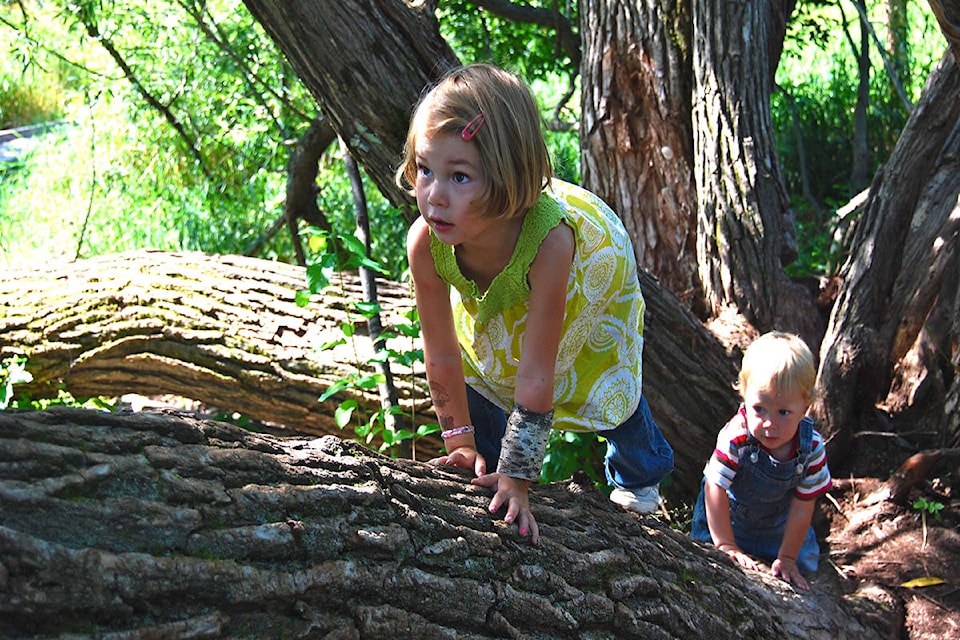The desire to remove the learning risks of childhood may actually be doing more harm than good for your child, according to a UBC researcher.
Mariana Brussoni says risky play encourages creativity, develops social skills and fosters resilience.
Hovering over your child’s every action is an anxiety-induced exercise, and that anxiety gets passed on to a child.
Brussoni, an injury prevention researcher, says it has never been safer to be a kid growing up in Canada.
But those numbers often get dismissed by a parent, where the statistical reality is lost to a more fearful perception.
“You see it in the U.S., where the crime stats continue to fall every year but people seem to think crime is getting worse,” Brussoni said.
“There has never been fewer injury related child deaths in Canada as is the case now. But we can’t get past our collective anxiety.
“It’s so horrific, every parent’s nightmare your child will get seriously injured or kidnapped, you want to do anything you can to avoid it.”
Brussoni pinpoints the change in parenting attitudes to the early 1980s, where the era of children running around the neighbourhood playing with their friends starting giving way to structured playtimes and more risk-free activities.
She says that attitude change was fueled by a surge of child raising advocates and authors promoting a more controlling atmosphere to raise kids, more moms entering the workforce which placed more kids in structured daycare and after-school programs, increasing reliance on vehicles to go anywhere.
“Parents were consuming all this stuff and it created expectations in society about ‘the right way’ to raise your kids, and it shifted our view of children as more vulnerable and much less capable of looking after themselves than was the case in previous generations,” she said.
Adding to that, she notes, is children brought up in that ‘helicopter parent’ environment are carrying on that tradition with their kids today.
As a result, Brussoni says research shows that just 37 per cent of children play outside every day, and just even per cent of children under the age of 10 are allowed to go out and play on their own.
“They go out only for structured activities or they stay indoors staring at screens,” she said.
“Basically what that is doing is parents are passing on their anxieties to children, and there decision-making is anxiety-based rather than on realistic expectations.”
Brussoni says suddenly going from zero to 100 in risk aversion contemplation is difficult for any parent to adapt into, as she suggests taking smaller baby steps to build up confidence both in your as a parent and your child for what both of you can handle when he or she steps outside the door on their own.
How to process that change is what convinced Brossoni to create OutsidePlay.ca, a website that showcases the latest research on injury prevention and the importance of outdoor play for kids on their own.
“I’m asked often to speak to school or parent groups on this topic but I can only reach so many people that way, so we thought the website is a way to get our message out to more people,” she said.
A parent herself of two kids, ages 9 and 10, Brussoni said tend to naturally be more risk averse, but she was startled by the response from her son, then age 7, about going to a close-by park in their East Vancouver neighbourhood.
“He was afraid he might get kidnapped, and that message didn’t come from me so he picked up it up from somewhere else.”
She says encouraging more risk is really about expanding a child’s comfort zone, to feel comfortable enough to make positive choices about climbing that tree or crossing a street safely on their own.
“They figure out for themselves when given the opportunity what their limits are in a given activity and feeling comfortable in doing it.”




